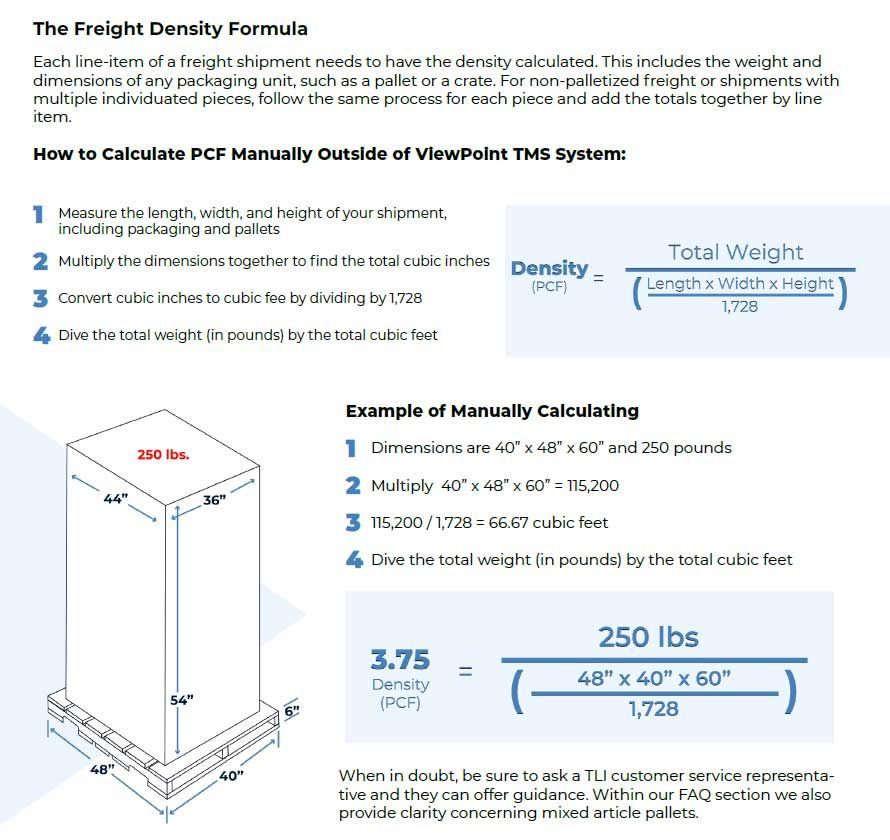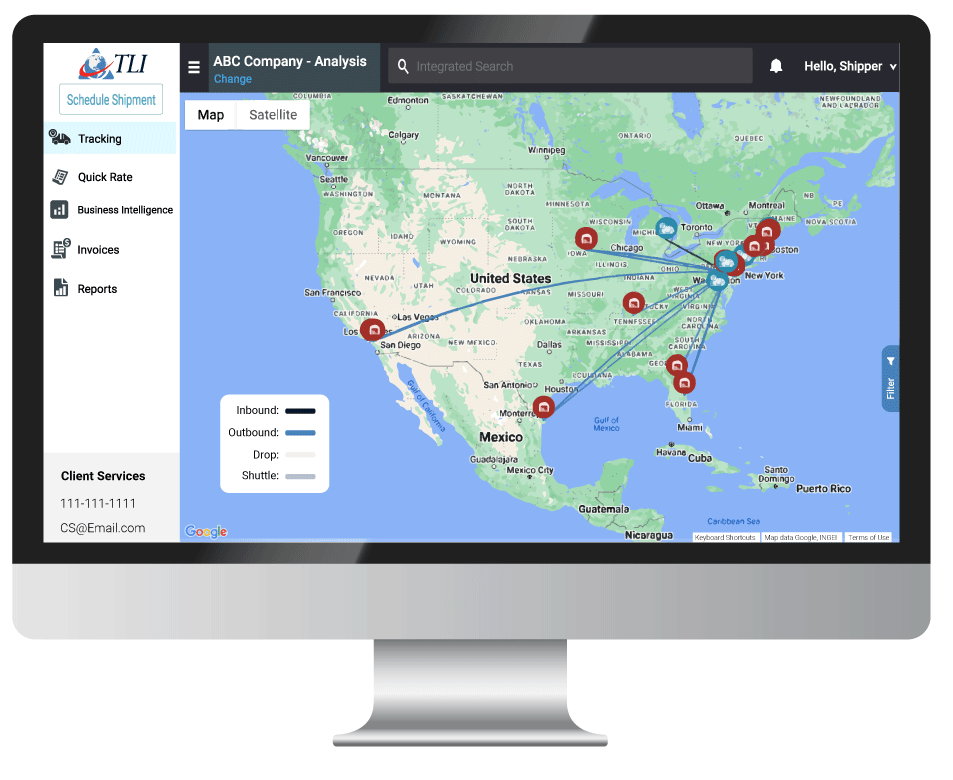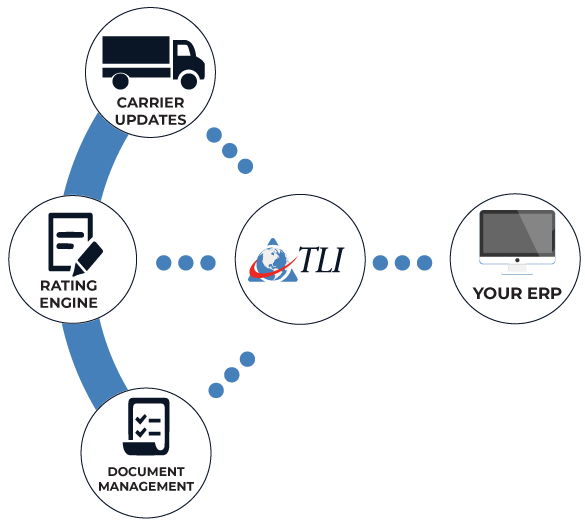PCF (Pounds per Cubic Foot) in the LTL Market
What is PCF?
Accurate and consistent classification of freight is crucial for ensuring fair pricing and safe transportation of goods. One vital metric that plays a significant role in determining the appropriate National Motor Freight Classification (NMFC) for shipments is PCF, which stands for Pounds per Cubic Foot. In this article, we will delve into what PCF is, why it is essential in the Less-Than-Truckload (LTL) market, and how it aids in the determination of the correct NMFC freight classification. If you are a shipper experiencing NMFC Reclassification issues, be sure to check out our automated freight class calculator!

PCF Measurement
Pounds per Cubic Foot (PCF) is a measurement used to express the density or weight of a material in relation to its volume. It calculates the weight of an item per cubic foot of space it occupies. To determine PCF, you divide the weight of the item (in pounds) by its volume (in cubic feet).
The General PCF formula is simple:
PCF = Weight (in pounds) / Volume (in cubic feet)
The Less-Than-Truckload (LTL) market involves the transportation of relatively small shipments that do not require an entire truck to carry. In this market, carriers charge shippers based on a combination of factors, including distance, weight, and freight class.
The LTL PCF formula is:

Density = TotalWeight / ((Length x Width x Height) / 1728) * Quantity)
HOW TO MEASURE NONPALLETIZED FREIGHT
EXAMPLE: If the length is 40 inches, the width is 48 inches and the height is 60 inches, multiply them as follows:
- 40 X 48 X 60 = 115,200 cubic inches
- Convert cubic inches to cubic feet by dividing the cubic inch total by 1,728 - the number of cubic inches in one cubic foot.
- For example: 115,200 divided by 1,728 = 66.67 cubic feet.
- Dividing the weight of the shipment by the number of cubic feet will provide the density.
- For example: 250 pounds divided by 66.67 cubic feet = 3.74 pounds per cubic foot.
HOW TO MEASURE PALLETIZED FREIGHT
EXAMPLE: If the pallet is 48 inches long, 48 inches wide and 24 inches high, add the height of the pallet (6 inches) to the height of the shipment (24 + 6) for a combined height of 30 inches.
- 48 X 48 X 30 = 69,120 cubic inches
- Next, convert the inches total to cubic feet by dividing 69,120 by 1,728 = 40 cubic feet.
- The density then equals the weight 525 (495 pounds for the shipment and approximately 30 pounds for the pallet) divided by the cubic dimension:
- 525 divided by 40 = 13.13 pounds per cubic foot.
Accurately calculating the PCF of your shipment is vital for several reasons:
Pricing Accuracy: LTL carriers often use PCF as a factor when determining shipping rates. Knowing the PCF of your cargo helps carriers assess the space your shipment will occupy, and this can influence the cost of transportation. Higher PCF values usually mean greater costs since they indicate less efficient space utilization.
Cargo Space Optimization: For LTL carriers, optimizing cargo space is essential. Accurate PCF calculations enable carriers to stack, load, and transport shipments more efficiently, reducing the need for excess space and potential damage to goods.
Determining Freight Class: Freight class is a standardized classification system used in the LTL industry to categorize shipments based on their characteristics. PCF plays a significant role in assigning the correct freight class. A higher PCF can lead to a higher freight class, which may result in increased shipping costs.

How PCF Determines NMFC Freight Classification
The National Motor Freight Classification (NMFC) system is a critical component of the LTL market, as it standardizes and simplifies the process of classifying freight. PCF is instrumental in this classification process:
- Freight Class Calculation: The NMFC uses a range of criteria, including density or PCF, to assign freight classes. Shippers must provide accurate PCF values for their goods when booking shipments. The NMFC has a specific range of PCF values associated with each class. Higher PCF values typically result in higher freight classes.
- Fair Pricing: Properly assigning the right freight class based on PCF ensures that shippers are charged fairly for the transportation of their goods. This standardization prevents carrier billing disputes and promotes transparency in the LTL market.
PCF Measurement
Every cubic inch counts! For shippers grappling with the complexities of PCF (pounds per cubic foot) measurements, Translogistics (TLI) emerges as the beacon of efficiency. Imagine a solution that doesn't just handle PCF measurements but automates them seamlessly.
Enter TLI's TMS system—an arsenal equipped with a PCF calculator, density calculator, and freight class calculator seamlessly integrated for your convenience.

But that's not all. What sets us apart is our capability to further integrate this wealth of data into your ERP or Microsoft Power BI dashboard. Now, I get it—this might seem intense. But let's face it—the manual way of handling PCF measurements? It's cumbersome, prone to errors, and simply not scalable. While it might seem easier, it's a broken system that holds your scalability back.

Embracing TLI's automated solutions isn't just a leap; it's a safe leap forward into a realm where efficiency, accuracy, and scalability reign supreme. Don't let the intricacies of PCF measurements be a stumbling block—partner with TLI and let automation pave the way to smoother, more scalable shipping operations.
Pounds Per Cubic Foot Calculator
Recognizing the challenges faced by shippers in accurately calculating PCF, TLI embarked on a mission to simplify this process. Traditional methods of PCF calculation involved manual measurements and calculations, which were not only time-consuming but also prone to errors. TLI aimed to change this by developing a user-friendly, automated PCF calculator accessible to all shippers.
TLI's PCF calculator is web-based and easy to use. Shippers can access it from any device with an internet connection, eliminating the need for expensive software or complex spreadsheets. The calculator is designed with shippers in mind. Its intuitive interface requires no special training or technical expertise, making it accessible to both novice and experienced shippers.
Shippers enter basic shipment information, such as weight and dimensions, into the calculator. It then automatically computes the PCF, providing instant results for quick decision-making. Results on the corresponding NMFC Classification and Freight Class are then auto-populated. TLI's PCF calculator employs precise algorithms to ensure accurate PCF calculations. This accuracy is vital for shippers seeking to determine the right freight class and avoid unexpected shipping costs.
With the automated calculator, shippers no longer need to invest valuable time in manual PCF calculations. This efficiency allows them to focus on other essential aspects of their logistics operations. In addition to PCF calculation, the tool can also suggest the appropriate National Motor Freight Classification (NMFC) for a given shipment based on the PCF value, further simplifying the shipping process. TLI's PCF calculator can be integrated into various ERP and e-commerce platforms, providing a seamless experience for businesses with more advanced shipping needs.
PCF Meaning in Shipping
“Pounds per Cubic Foot” serves as a crucial metric in determining the density of freight being shipped. Essentially, PCF signifies the weight of goods in relation to the space they occupy. It’s a fundamental factor in freight calculations, as carriers utilize PCF to establish rates and allocate space effectively. Understanding and calculating PCF accurately and timely through the use of a TMS system is critical for shippers to scale their supply chain effectively.
The formula as mentioned above for computing PCF is relatively straightforward. It involves dividing the total weight of a shipment (in pounds) by the total volume of the shipment (in cubic feet). This calculation offers a numerical representation of how densely packed or voluminous the freight is. Shippers need to determine the accurate PCF to classify their freight properly and consequently assign the appropriate freight class and shipping rates. Efficient PCF calculation is integral for maintaining transparency in shipping costs and ensuring fair pricing, this is why it is not practical to manually determine the PCF on a shipment-by-shipment basis.
The significance of PCF in shipping operations cannot be overstated. It directly impacts shipping costs and space utilization within trucks or containers. Freight that has a higher PCF value, indicating lighter weight in relation to volume, may occupy more space, influencing carrier rates. Conversely, freight with a lower PCF, signifying higher density, might occupy less space and could potentially qualify for lower shipping rates. Therefore, accurately calculating and optimizing PCF is pivotal for shippers aiming to maximize space efficiency and minimize shipping expenses. Keep in mind however, even after determining the PCF, it is a requirement to then determine the freight class which also uses cargo liability in its calculation. This is why the freight class calculator is also a major requirement for shippers, and why they partner with TLI to deploy our scalable TMS system solution.

PCF Summary
Understanding Pounds per Cubic Foot (PCF) is crucial for shippers involved in the LTL market. PCF allows for accurate pricing, efficient cargo space utilization, and, most importantly, proper determination of the National Motor Freight Classification (NMFC). This knowledge ultimately results in fair and transparent shipping practices, benefiting both shippers and carriers alike. By recognizing the significance of PCF, you can navigate the complex world of LTL shipping with confidence and precision.
TLI Insights
Get the latest logistics insights and tips from TLI's award-winning team. Stay ahead in transportation planning.
Questions? Email us at marketing@shiptli.com



